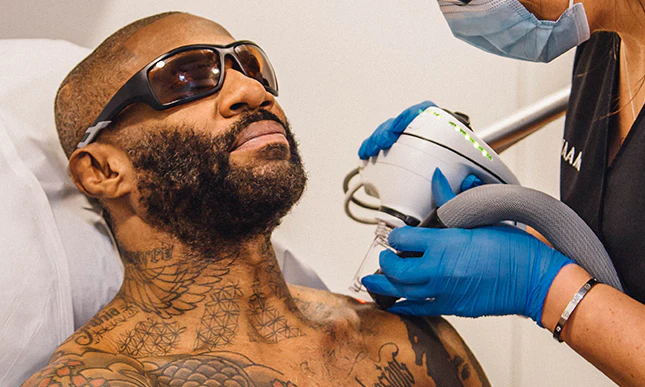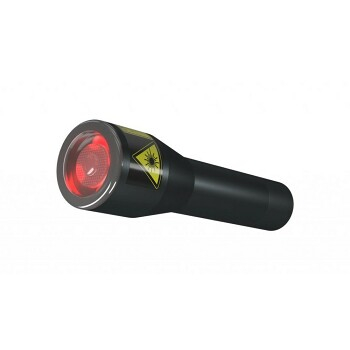Safe Laser low level laser therapy (LLLT) (LLLT), which is a type of low-level light therapy, is able to treat skin ulcers through several ways. It stimulates collagen synthesis, fibroblast activity and also angiogenesis (formation new blood vessels) and all of these are crucial to heal wounds. This can promote faster healing of ulcerative wounds.
Reduced Inflammation LLLT has an anti-inflammatory effect through the inhibition of cytokines which cause inflammation and promoting mediators that reduce inflammation. LLLT can be effective in reducing the severity of ulcerative wounds where inflammation can cause tissue injury and delay healing.
Pain relief- LLLT alters the perception of pain by altering nerve conduction. This reduces the release of pain-related mediators such as substance P. In ulcerative injuries, that are frequently connected with discomfort and pain, LLLT may help relieve pain and improve overall patient experience.
Increased Blood circulation LLLT stimulates the microcirculation as well as vasodilation. The result is an increase in blood flow towards the wound. Increased blood circulation provides oxygen and nutrients to the tissues, promoting healing and facilitating the removal of waste products and toxins from the wound.
LLLT's antimicrobial effect can reduce infection risk in wounds that are ulcerative. By promoting bacterial clearing and preventing the spread of infection to the wound, LLLT aids in reducing the likelihood of infection and speeds up the healing process of wounds.
LLLT helps reduce scars by encouraging the regeneration of tissue and remodeling. By stimulating the production collagen fibers and promoting alignment of collagen bundles LLLT could help produce more robust scar tissue.
In general low-level Laser Therapy with Safe Laser is a safe and non-invasive method of treating wounds caused by ulcers. This treatment speeds up healing of wounds, decreases pain, and improves overall outcomes for wounds. It is essential to consult with a professional regarding the best treatment for wounds. Read the most popular safe laser 1800 for site advice including lezer kezeles, lágy lézer vélemények, otthoni lézer kezelés, laser kezelés, lágy lézer kezelés, safe laser kezelés budapest, lézer kezelés hatása, orr lézer készülék, lágylézer hatása, mozgásszervi problémák and more.

What Can Low-Level Safe Laser Therapy (Lllt) Assist With Ear Problems?
Low-level laser therapy is utilized to treat a range of ear disorders. LLLT may help reduce inflammation in certain conditions like otitis (inflammation of the canals in the outer ear) and Otitis (middle ear infections).
LLLT assists in relieving pain in ear conditions like earaches, otitis and ear aches.
Enhanced Tissue Repair and Regeneration- LLLT accelerates the healing process and regenerates tissues by stimulating the cellular metabolism. LLLT aids in faster healing for damaged tissues that are affected by conditions like otitis eardrum ruptures, or the otitis.
Improved Blood Circulation LLLT improves microcirculation, vasodilation and blood flow to the ear. A better blood circulation is a great method of delivering oxygen, nutrients and healing agents to injured or inflamed tissues.
Treatment of TinnitusManagement of Tinnitus LLLT has been investigated as a possible treatment option for tinnitus, an ailment characterized by ringing or buzzing in the ear. Although the precise mechanism behind LLLT is not known but it can enhance blood flow in the auditory system and reduce inflammation, leading to less the occurrence of tinnitus.
LLLT reduces earwax and buildup of cerumen which makes it easier to get rid of. This also decreases the risk of infection or ear blockage. It's particularly beneficial for people who have excessive earwax as well as those who experience earwax impaction.
Safe Laser's low-level laser therapy is non-invasive, drug-free and provides relief for symptoms like inflammation and pain. It is essential to speak with an expert in ENT to get a diagnosis and recommended treatment before using LLLT. Follow the top safe laser 500 ár for site tips including otthoni lézer kezelés, lágylézer kezelés budapest, lágy lézer kezelés, lágylézer kezelés árak, lágylézer kezelés, lágylézer hatása, lágylézer bérlés, lezeres kezeles, lágylézer készülék, lágy lézer kezelés and more.

How Long Before A Safe Laser Device Has An Effect On Wound Healing?
Low-level therapy from Safe Laser (LLLT) is a treatment that helps wound healing, may have varying results depending on factors like the type and severity, health of the individual as well as the patient's responses to treatment. Typically, a set of LLLT sessions are recommended over a period of time to ensure optimal healing.
The type and severity of the wounds- The nature of wound as well as its degree of severity will affect the number of LLLT sessions required. The number of sessions required for less severe, smaller injuries might be lower than those for more severe and more serious injuries. Additionally, chronic wounds and injuries that are a result of medical conditions might require more sessions to heal effectively.
The number of LLLT sessions required for treatment can also be affected by stages of wound healing. Different stages of wound healing such as inflammation, proliferative, and remodeling, can require different treatment methods. LLLT can be utilized throughout the different phases of wound healing to promote tissue repair and regeneration.
Individual Response to Treatment- Personal factors like general health, immunity function, and healing capacity may affect how well a person responds to LLLT for wound healing. Certain people heal wounds faster and respond to treatment faster, while others might need longer time.
Treatment Protocol - The treatment plan prescribed by a medical professional will be a key aspect in determining how many LLLT sessions are necessary to aid in wound healing. Healthcare providers can customize treatment plans to suit the individual. This might include scheduling LLLT at different times each week over a period of time.
Although some individuals can experience improvement in healing wounds after just a couple of LLLT session, others might require more time to achieve optimal results. It's crucial to follow the prescribed treatment regimen set by a healthcare professional and be present at every scheduled LLLT sessions to reap the maximum effects of the therapy on wound healing. Additionally, it's vital to keep track of the progression of the wound and to contact the healthcare professional to ensure the proper treatment of the wound and any necessary changes to the therapy program are implemented.